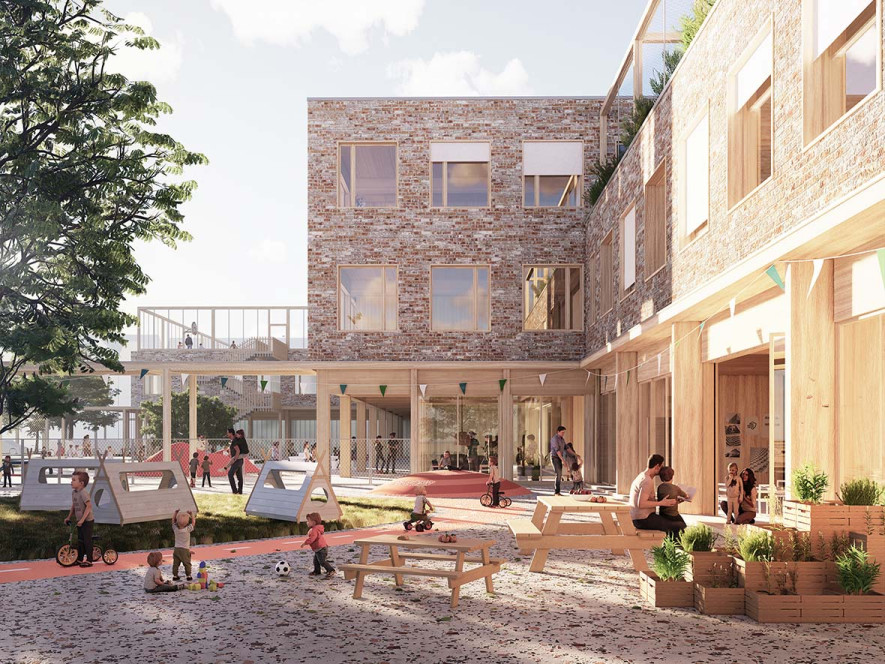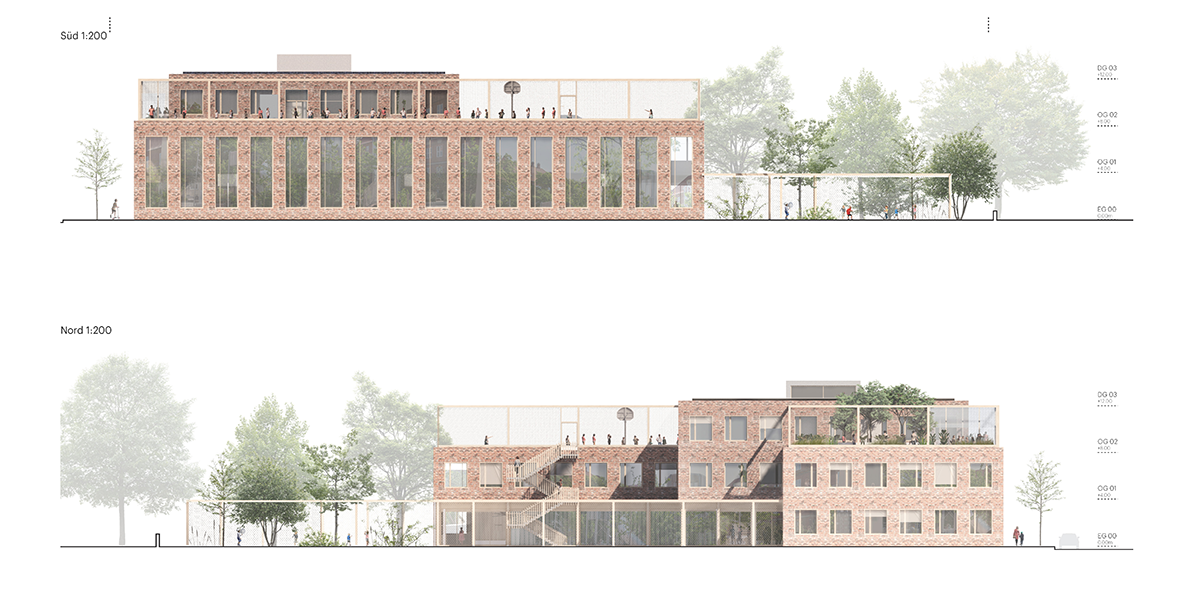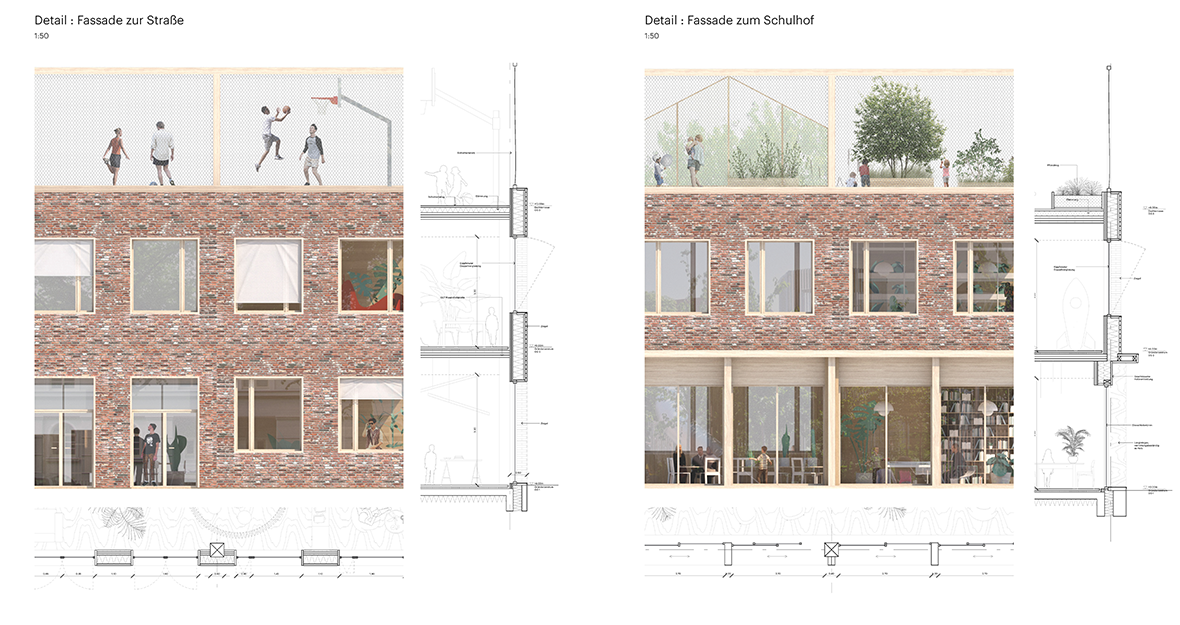


The competition called for a new school building in the area to complement the current building that was at its limits in capacity. The proposed design for the extension of the Wilhelm Raabe School addresses the responsibility towards the environment and society and, compared to conventional construction methods, has a significantly reduced ecological footprint for the entire life cycle of the building. In this way a project for Hannover that is sustainable in terms of content, urban planning and construction is created.
Building with solid wood elements today has structural properties similar to concrete. They are stable, robust and ideal for large spans. In addition to the advantages in terms of CO2 emissions, this construction method also offers shorter construction times, good isolation and sound insulation, fire resistance and a pleasant and healthy indoor climate.

The design allows the nursery, school and sport hall to function independently of each other. By interconnecting the volumes of the three units on each level, it can be viewed as one building, while creating space for user flexibility. The whole design is organized on a flexible grid: this framework enables adaptation to changed, future usage requirements. For example, over time, the requirements for play, learning and sports environments can change.
The school complex includes two usable roof areas, one terrace for studying outdoors and workshop activities, the other offering space for the sports areas. The use of the roof landscape allows the playground and schoolyard on the ground floor to be larger and greener. The two roof surfaces are framed by a construction made of steel and are barrier-free. A greenhouse, shading elements and sports facilities create new, unique learning spaces for the school and the city of Hannover.

In order to separate the school yard and the outside area of the daycare center from the public environment, a pergola with an integrated fence is proposed. In this way, in addition to an aesthetic separation, a covered outdoor space is offered. The pergola conceptually carries the inner, warm wooden atmosphere from the school building directly into the outside space.
In the new branch of the Wilhelm-Raabe-Schule, upcycling materials are used in selected locations. Sustainable alternatives are used without incurring additional costs, and they also offer visible quality. For example, the acoustic ceiling panels in the building are made of upcycled Plastic materials.
| Location. | Hannover, Germany |
|---|---|
| Assignment | Shared spaces design: courtyards and rooftops |
| Size | 9200 sqm |
| Design | 2020 |
| Status | Closed single-phased Competition: honorable mention |
| Client | Hannover Fachbereich Gebäudemanagement |
| In collaboration with | ADEPT architects |